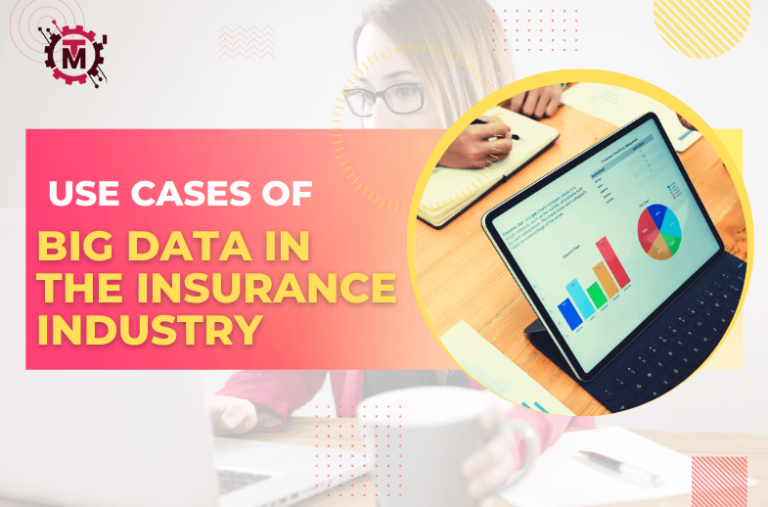Utilizing big data in the Insurance Industry significantly impacts productivity and efficiency. With the advent of big data, companies are able to extract more clients’ relevant information and can manage it precisely to see where they can gain maximum benefits and which parts are considered to be maintained.
Moreover, you can bring automation in several steps through bid data analytics to streamline different processes, including claims management and personalized customer experiences. In this blog post, we will provide complete details about big data, exploring its use cases in the Insurance industry.
What is Big Data?
As the name represents, big data refers to a large volume of unstructured and structured data that ordinary machines and data-processing methods cannot process. You can get this enormous information from numerous channels, including social media, sensors, and transaction history.
The data can be of many types, including text, images, videos, and more. You must leverage the modern tools that can process such a huge amount of information readily and deliver proper insights to work accordingly. This is the best way to signify these diverse formats and take your experience to an advanced level.
Use Cases of Big Data in the Insurance Industry
Around 3 to 5 years ago, the Insurance industry was not one of the most popular industries in the world. No one ever recognized the potential and benefits of this industry until the risks and other harmful effects increased.
However, technological advancements have enabled this industry to bring automation in its different steps and grab the users’ information to promote their desired services for maximum perks. In the under-section, we have listed some of the most common case uses of big data in the Insurance industry.
1 – Risk Assessment
Risk assessment is the foremost critical activity every insurance company looks forward to maintaining the quality of its performance. Insurance companies can develop enhanced risk profiles by utilizing larger datasets from different sources, such as policyholder information, claims data, social media information, and telematics.
As a result, they can make more productive decisions with better underwriting procedures and reduce fraudulent activities. Ultimately, you can take your customers’ experience to an advanced level by providing them with a secure environment.
Further, you can start planning to tackle other harmful outcomes by assessing the risks beforehand.
2 – Claims Management
Big data has also played a significant role in managing claims management procedures. You can easily evaluate the previous data to recognize the patterns and trends to track false claims. Additionally, numerous real-time data source services, like telematics and IoT devices, help you enable real-time monitoring of insured assets and speedy claims settlement.
You can also facilitate proactive risk mitigation to prevent more losses. Besides, a term known as sentiment analysis of customer feedback and social media data can deliver productive information to take claim-handling experiences to the next level, resulting in maximum profit and other associated outcomes.
3 – Customer Segmentation
Insurance deals are of numerous types, including traveling insurance, funeral insurance, and healthcare insurance. Utilizing big data and processing it with advanced tools enables you to extract people’s interests and requirements. You can easily determine which audience is looking for the desired services.
It helps you segment them into different portions based on their interests. Complying with them, you can promote the particular offers to them that help you get the maximum outcomes and enjoy the best benefits. Moreover, segmentation leads to personalization, the main pathway to building credibility and trustworthiness in the market.
Hence, you can get a dominating edge over the competitors and lead your company to the topmost position.
4 – Fraud Detection and Prevention
The biggest threat to the insurance industry has always been fraud; detecting it is an absolute requirement to prevent the company’s assets. Otherwise, you may end up with your plans without getting anything worthy. Insurers can easily detect fraudulent activities by analyzing big data and historical structured and unstructured patterns.
Advanced analytics techniques, such as predictive modeling and machine learning procedures, enable companies to proactively check fraudulent claims and take appropriate actions. As a result, you can reduce the losses and maintain the integrity of your system to go ahead of the competition.

5 – Predictive Analytics
Predictive analytics is the best way to determine the upcoming marketing trends and how the world will be revolutionized. With the help of big data, you can easily estimate different factors, like socio-economic indicators, environmental data, and the latest developments in tech.
Insurers can develop more ergonomic predictive models that claim to understand future frequencies and costs better. Thus, they can optimize the reserves, leading to more accurate pricing and risk management strategies. Predictive analytics has also played a crucial role in properly directing the insurance industry’s growth, ensuring useful benefits.
6 – Enhanced Operational Efficiency
Enhanced operational efficiency is another absolute requirement of every industry, and the insurance industry is no exception. Processing big data can provide you with more knowledge and information that you can leverage to streamline administrative tasks and improve the operational efficiency of several manual processes.
In this way, you can reserve human resources for other and more essential works. Many repetitive tasks can be handled by implementing robotic process automation. In addition, data analytics helps you check the basic flaws in your working model.
By implementing data-driven decisions, you can eliminate them and make your insurance company stand out in the market to achieve more gainful results.
Final Verdict
This is all about the use case of big data in the Insurance industry. Technological advancement has enabled industries to leverage more data from different sources, including purchase history, social media, etc. By processing this wider information, you can easily evaluate the upcoming risks and other harmful aspects.
You can also make data-driven decisions that help you overcome all the critical issues to get over the market by improving operational efficiency. Above all, predictive analytics help understand people’s requirements and work accordingly to provide them with desired results.







